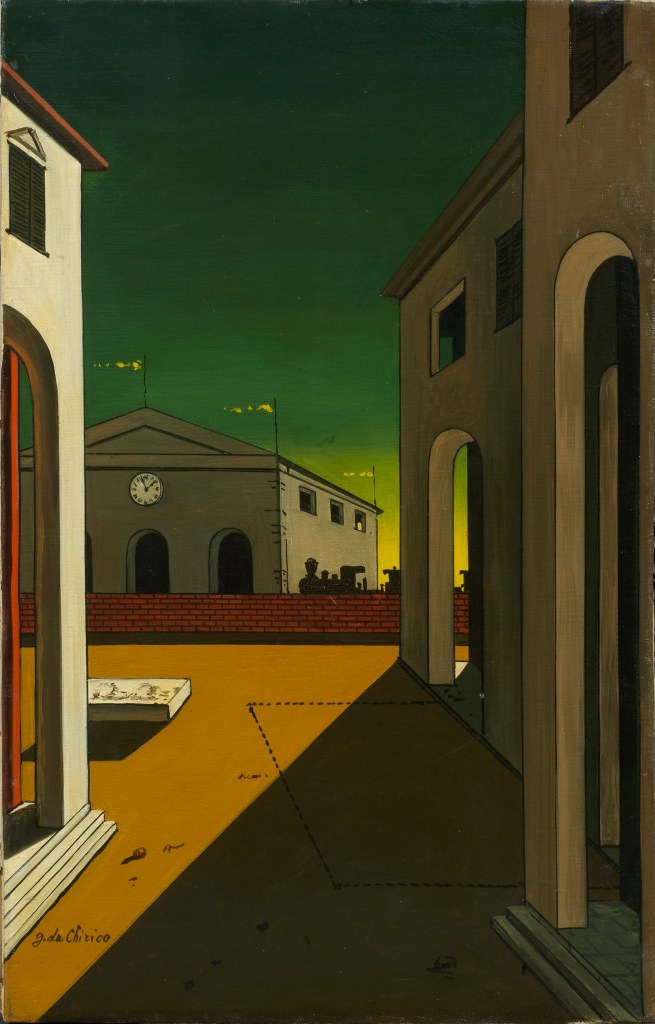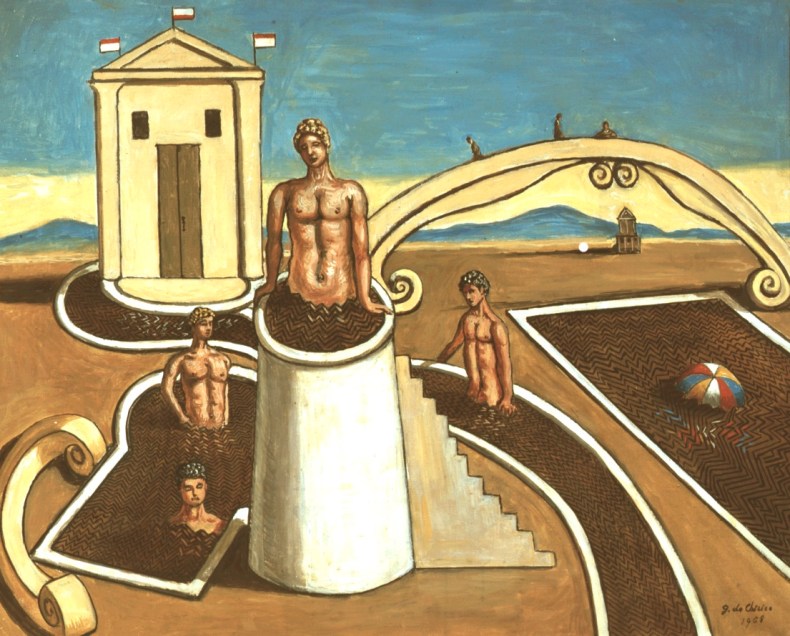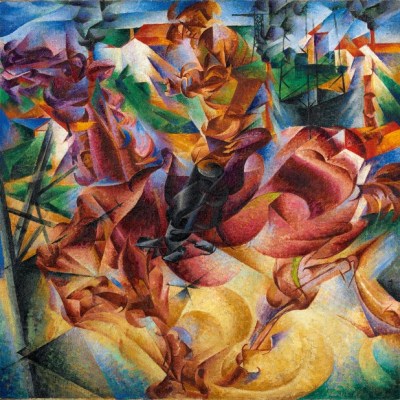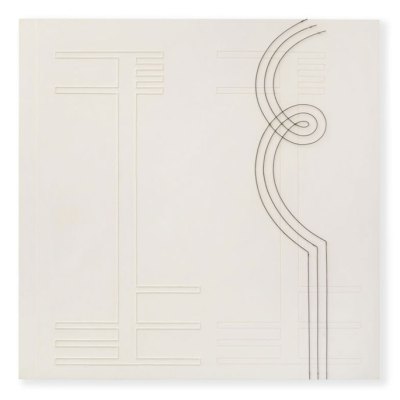In 1914, the Italian intellectual Ardengo Soffici characterised Giorgio de Chirico’s painting style as the ‘writing down of dreams’. Isolating each motif, Soffici describes a syntax of ‘infinite rows of arches and facades, of extended straight lines, of gigantic masses of simple colours’ which de Chirico used to express a ‘sensation of vastness, of solitude, of immobility’. Though it was to be a major influence on the Surrealists, this powerful lexicon was at this point utterly idiosyncratic. It resulted from a revelation de Chirico had in the Piazza Santa Croce in Florence while recovering from chronic intestinal illness one autumn afternoon in 1910. As he sat and studied a statue of Dante, he suddenly felt he ‘was looking at these things for the first time’. In that instant, the composition for Enigma of an Autumn Afternoon came to him, a souvenir so suggestive that de Chirico stated, ‘every time I look at it I relive the moment once again’.
Piazza d’Italia con piedistallo vuoto (1955), Giorgio de Chirico. Courtesy Tornabuoni Art

For all its power to transport de Chirico, the new visual language brought him no clarity. The incident was eternally ‘an enigma’. We meet him in this mind-set with Autumn Arrival, the earliest work on display at ‘Reading de Chirico’ at Tornabuoni Art, which displays 25 paintings along with his writing. The impression is spare and experimental with sketchy shadows and bendy columns, worlds away from the stark delineations and bold planes that Soffici identified in the artist’s mature style. Yet it easily evokes the metaphysical landscape, with all its empty expanse in ways that are indeed enigmatic.
Bagni misterioso (1968), Giorgio de Chirico. Courtesy Tornabuoni Art

With a considerable collection of theoretical papers, novels, prose, and even love letters – several only recently translated into English and many displayed in their original manuscript form – de Chirico is rightly remembered as a prolific writer. He published a rush of post-war polemics in the art periodical Valori Plastici, of which ‘The Return of Craftsmanship’ in 1919 signalled a shift away from deserted piazzas and incongruous interiors towards classicised scenes that are painterly to the point of pastiche. Despite de Chirico’s efforts to explain the transition, the Surrealists could make no sense of it and lost their admiration for him.
Yet when his novel Hebdomeros was published a decade later in 1929, they recognised the pittura metafisica (‘metaphysical art’) again in its peculiar narrative, which has no coherent beginning or end. Despite this affinity with Surrealist literature, Tornabuoni places the novel in the context of de Chirico’s neo-baroque work, and it vividly describes the ‘necropolises, so white in the moonlight… [and] deserted shores of a sea whose every wave bore roses’ found in a few ghostly, pinkish scenes. De Chirico never did desert the dreamlike and his return to a much more vibrantly coloured piazza is evident throughout the exhibition, most notably in a version of Ettore e Andromaca from 1950.
Ettore e Andromaca (1950), Giorgio de Chirico. Courtesy Tornabuoni Art

We are also offered glimpses into de Chirico’s private life. Nude (1930) is captioned by a quotation from a love letter which reads, ‘whatever happens to me, I will always be happy to have known you and to have dedicated all the strength of my heart…to you’. Its inclusion might be gratuitous were it not one of 23 letters dating from 1929–31, the recent publication of which has allowed the painting’s subject to be identified as de Chirico’s lover Cornelia. It exemplifies the ways in which his writing might provide a means of interpreting his art. It’s an approach that is, however, undermined by the exhibition’s layout, which isolates the writings from the works with a central table containing open books, scribbled notes, and poems translated on to slips of plastic. The visitor must shift focus between wall and table, a gap into which some lucidity is lost.
The exhibition’s curator Katherine Robinson describes Hebdomeros as ‘a constellation of images and visual thoughts translated into words’, complementing Soffici’s insistence on the textural quality of de Chirico’s art. It is almost as if his painting and writing together create a new form that transcends medium. When we consider them side by side, we gain access not just to de Chirico the painter, but to de Chirico ‘the writer, the thinker, the dreamer, the poet, the metaphysician’.
‘Reading de Chirico’ is at Tornabuoni Art, London until 12 January 2018.



